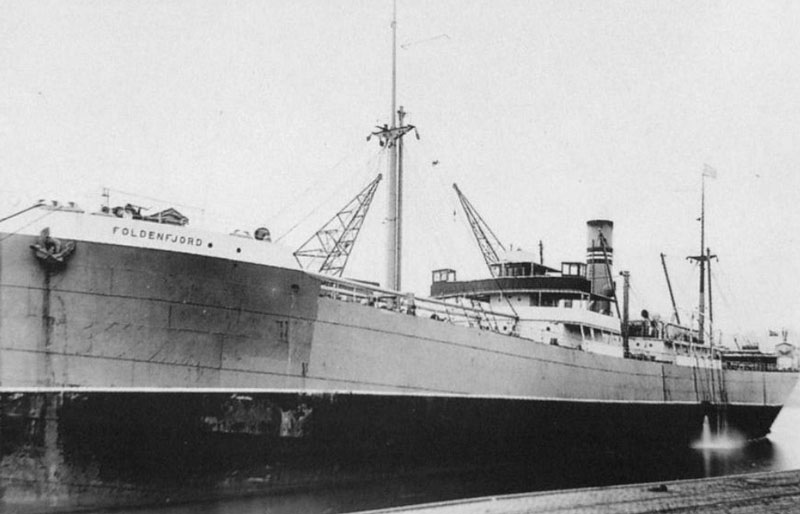
2023 Shakedown + EXPRESS: West Coast Exploration (ROV and Mapping) (EX2301)
Search for SS Larry Doheny
Tonight, the 2023 Shakedown + EXPRESS West Coast Exploration expedition team will conduct mapping operations to identify potential targets that may be the wreck of SS Larry Doheny, an American oil tanker sunk by a Japanese submarine on October 5, 1942. Tomorrow, we’ll be diving on the targets to see if our mapping data have revealed the final resting place of this early World War II casualty. Water depths at the potential site mean it will be difficult to locate, and we won’t know until we reach the seafloor if we’ve found Larry Doheny (sometimes targets don’t turn out to be what we are expecting or hoping). Regardless of what we find, the site will serve as the backdrop for an engineering-focused dive as part of the expedition.
On April 21, as part of the 2023 Shakedown + EXPRESS West Coast Exploration expedition, NOAA Ocean Exploration will dive on a target suspected to be SS Larry Doheny, an American oil tanker sunk by a Japanese submarine on October 5, 1942. The final resting place of this early casualty of World War II has remained unknown. If found, the shipwreck will serve as the backdrop for an engineering-focused dive as part of the expedition.

Download largest version (jpg, 279 KB).
Built in 1921, SS Larry Doheny, formerly named Foldenfjord, was a 430-foot x 59-foot x 33-foot American oil tanker owned by the Richfield Oil Company at the time of its loss. Richfield Oil ran gas stations throughout the U.S. West Coast and was ultimately enveloped into ARCO and later BP. Larry Doheny was an instrumental part of supplying Richfield Oil stations as automotive travel and commercialization was growing considerably in scope and scale. On October 3, 1942, it departed Long Beach, California, for Portland, Oregon. Two days later, it was intercepted by Japanese Imperial Navy submarine I-25:
“Tanker was enroute from Long Beach, Cal. to Portland, Ore., with 66,000 bbl of crude oil (Bunker C. Crude). Course was altered Oct. 4 after radio warning of sub in that area. At 2121 Oct. 5th, a torpedo track was seen across the bow. The 3rd. mate evaluated this information as a porpoise-track. A second miss off the bow was reported soon after. Paravanes on bow-protection gear were never used on this ship in more than 300F of water. At 2207, ship was struck by torpedo from a forward direction at port side #2. Dull thud and snapping crack was heard by all aboard and by a rescue ship 8 miles out to sea. Port side buckled and a hole was breached 6′ below waterline. No. 3 tank exploded and set fire to the bridge section. No maneuvers were possible after attack, ship aflame, mechanisms wrecked and many of personnel trapped. No counter offensive was possible. Burning ship was abandoned immediately after attack, and continued to burn, settling slowly until it sank 13 hrs after the attack. From its position 8 miles distant the rescue ship Coos Bay approached at full speed to pick up survivors, firing star shells to locate sub if it should surface. 40 of the 46 were rescued; 3 known dead, 3 believed dead. The Chief Officer stated that there is little secrecy to merchant ships sailing from Pacific coast ports. The submarine was not seen. Confidential publications went down with the ship.”
Larry Doheny was an early war casualty of World War II and is of interest to maritime heritage communities for the circumstances of its loss. As one of 87 shipwrecks listed on NOAA’s Potentially Polluting Wrecks list, it is also of interest to other management agencies including the United States Coast Guard and NOAA’s Office of Response and Restoration for the potential ecological risk that its oil cargo could pose.
Crew aboard NOAA Ship Okeanos Explorer will first have to locate Larry Doheny using the ship’s hull-mounted multibeam echosounder before then using it as a backdrop for an engineering-focused shakedown dive. Larry Doheny was submitted to NOAA Ocean Exploration as a maritime heritage priority site during the Fiscal Year (FY) 23 and FY24 West Coast Call for Input by Dr. Mike Brennan and Dr. James Delgado at SEARCH, Inc. This dive will be principally executed to conduct engineering tasks and checks on remotely operated vehicles Deep Discoverer and Seirios.
By Phil Hartmeyer, Marine Archaeologist, NOAA Ocean Exploration
Sources:
Office of the Chief of Naval Operations (OCNO) 1942 Sinking Report of Larry Doheny. Tenth Fleet ASW Analysis & Stat. Section Series XIII. Report and Analyses of U.S. and Allied Merchant Shipping Losses 1941-1945: Kortrnaer – Liberty Glo, Records of the Chief of Naval Operations, Box 235, Record Group 38, National Archives at College Park, College Park, MD.
